Soil Microbiology
Soil microbiology, a diverse realm of microbial life, encounters a spectrum of antimicrobials shaping the intricate web of interactions within this ecosystem. The soil is a reservoir for various natural antimicrobials, primarily produced by bacteria and fungi in response to environmental pressures. Understanding the role of these antimicrobials is crucial in unraveling the complexities of soil microbial communities. One key facet of soil microbiology involves the production of antibiotics by microorganisms. Streptomyces species, ubiquitous in soil, are prolific producers of antibiotics, contributing to the ecological balance by suppressing the growth of competing microorganisms. These natural antimicrobials serve as essential regulators, influencing the composition and function of the soil microbiome. Contrastingly, the introduction of synthetic antimicrobials through human activities poses challenges to soil ecosystems. The application of agrochemicals, pesticides, and herbicides can disturb the equilibrium of soil microbial communities. While these chemicals aim to protect crops, they may inadvertently impact non-target microbes, potentially leading to disruptions in nutrient cycling and overall soil health. Antimicrobial resistance in soil bacteria is a growing concern linked to human practices. The selective pressure exerted by antimicrobials can accelerate the development of resistance, posing risks to both environmental and human health. Additionally, the fate of antimicrobial residues in soil, including degradation and persistence, plays a crucial role in determining their long-term impact on microbial communities.

Francis J Castellino
University of Notre Dame, United States
Ranjan Ramasamy
ID-FISH Technology, United States
Saurabh Chattopadhyay
University of Kentucky College of Medicine, United States
Rico Leonardo Lizbinski
Northern Light Health, United States
Sasha Leibholz
New York Presbyterian Columbia/Cornell, United States
Lauren Gruffi
New York Presbyterian Columbia/Cornell, United States



Title : Changing population immunity to COVID-19 in the context of infection, vaccination, and emerging SARS-CoV-2 variants
Ranjan Ramasamy, ID-FISH Technology, United States
Title : Extensively drug-resistant bacterial infections: Confronting a global crisis with urgent solutions in prevention, surveillance, and treatment
Yazdan Mirzanejad, University of British Columbia, Canada
Title : Bioterrorism through the ages: Historical perspective, emerging threats, and medical countermeasures
Claudia Ferreira, Sorbonne University, France
Title : Measles vaccination coverage indicators in 2023 and advance towards measles elimination and eradication by 2030
Pedro Plans Rubio, College of Physicians of Barcelona, Spain
Title : Pathogen-derived noncanonical epitopes: Are they valuable targets for novel vaccinations and shall we be concerned about autoimmune responses?
Michele Mishto, Francis Crick Institute, United Kingdom
Title : Severe influenza and other related respiratory infection cases during Omicron era in Japan
Masafumi Seki, Saitama Medical University International Medical Center, Japan